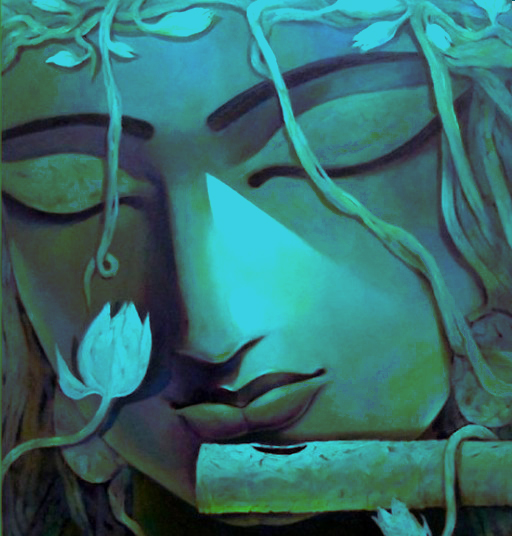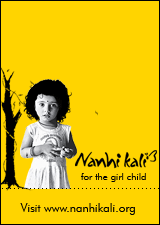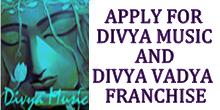Slave to the Game
Online Gaming Community
Indian Musical Instrument
Music Instruments are of broadly divided into four types – String Instruments, String Bowing Instruments, Percussion Instruments and Wind Instruments. Musicians from different cultures all over the world developed basic and advanced music technologies to devise the Indian musical instruments and Western / Global music instruments. Divya Music presents details on a few traditional and modern marvels in musical instruments available and in practice presently. Divya Music offers instrumental music training courses / lessons on regular basis and DM live core – online instrumental music classes for learning to play the following musical instruments:
String Musical Instrument
Veena
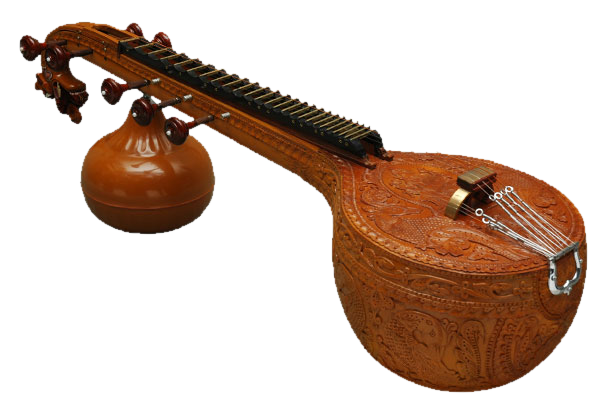 Veena : is a plucked stringed instrument used in Carnatic music. There are several variations of the veena,
which in its South Indian form is a member of the lute family. One who plays the veena is referred to as a
vainika.
Veena : is a plucked stringed instrument used in Carnatic music. There are several variations of the veena,
which in its South Indian form is a member of the lute family. One who plays the veena is referred to as a
vainika.
Sitar
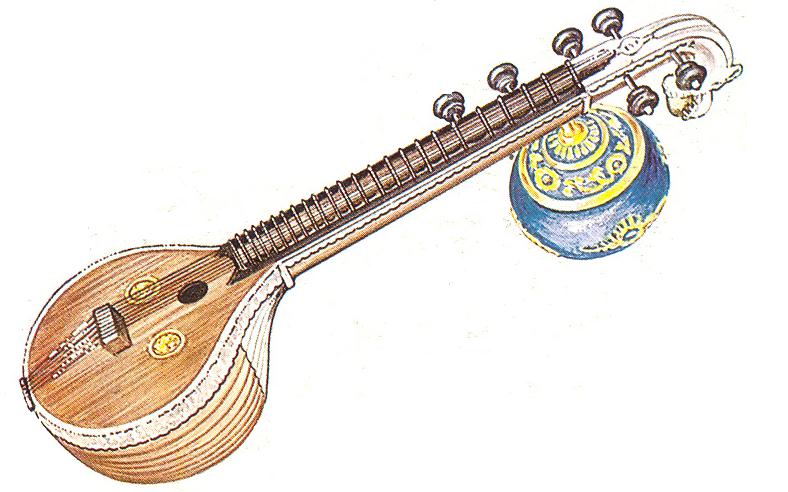 Sitar : The sitar is a plucked stringed instrument predominantly used in Indian and Pakistani classical music.
It derives its resonance from sympathetic strings, a long hollow neck and a gourd resonating chamber.
Sitar : The sitar is a plucked stringed instrument predominantly used in Indian and Pakistani classical music.
It derives its resonance from sympathetic strings, a long hollow neck and a gourd resonating chamber.
Tanpura or Tambura
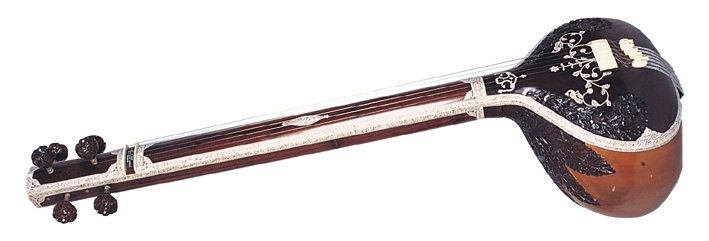 Tanpura or Tambura : The tambura, tanpura, tamboura or taanpura is a long-necked plucked lute (a stringed
instrument found in different forms and in many places).
Tanpura or Tambura : The tambura, tanpura, tamboura or taanpura is a long-necked plucked lute (a stringed
instrument found in different forms and in many places).
Santoor
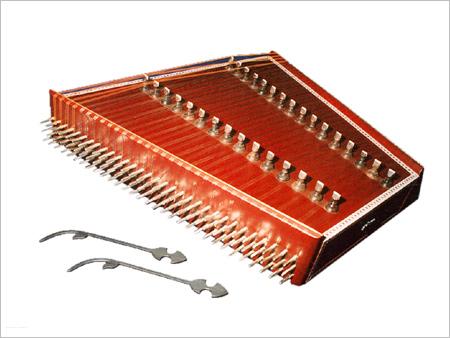 Santoor : Its origin is very old. In ancient sanskrit texts, it has been referred to as Shatatantri vina
(100-stringed vina). In India, the santoor was used as an accompaniment instrument to the folk music of Kashmir.
It is played in a style of music known as the
Sufiana Mausiqi. The Sufi mystics used it as an accompaniment to their hymns.
A typical santoor has two sets of bridges, providing a range of three octaves, which generally has 72 strings.
Santoor : Its origin is very old. In ancient sanskrit texts, it has been referred to as Shatatantri vina
(100-stringed vina). In India, the santoor was used as an accompaniment instrument to the folk music of Kashmir.
It is played in a style of music known as the
Sufiana Mausiqi. The Sufi mystics used it as an accompaniment to their hymns.
A typical santoor has two sets of bridges, providing a range of three octaves, which generally has 72 strings.
Sarod
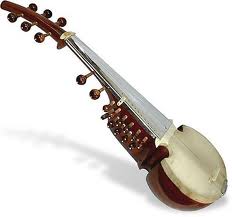 Sarod : The sarod is known for a deep, weighty, introspective sound, in contrast with the sweet, overtone-rich
texture of the sitar, with sympathetic strings that give it a resonant, reverberant quality. It is a fretless instrument
able to produce the continuous slides between notes known as meend (glissandi), which is important to Indian music.
Sarod : The sarod is known for a deep, weighty, introspective sound, in contrast with the sweet, overtone-rich
texture of the sitar, with sympathetic strings that give it a resonant, reverberant quality. It is a fretless instrument
able to produce the continuous slides between notes known as meend (glissandi), which is important to Indian music.
Swar Jhankar
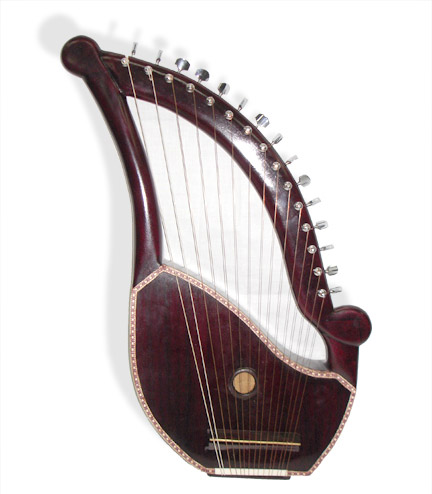 Swar Jhankar : SWAR JHANKAR is a beautiful sounding instrument shaped like a Harp of the western counterpart.It has 15
strings which can be tuned to the scale one wishes to play.The drone can be maintained by plucking the 1st string with one hand
and the desired note with the other.Machine head screws are fitted for easy tuning. C-tuning is the best tuning.
Swar Jhankar : SWAR JHANKAR is a beautiful sounding instrument shaped like a Harp of the western counterpart.It has 15
strings which can be tuned to the scale one wishes to play.The drone can be maintained by plucking the 1st string with one hand
and the desired note with the other.Machine head screws are fitted for easy tuning. C-tuning is the best tuning.
Swar Mandal
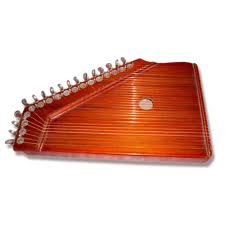 Swar mandal : The swarmandal or
Indian harp is an Indian zither that is
today most commonly used as an accompanying instrument for vocal Hindustani Classical music (the classical music of North India,
Pakistan, and Bangladesh). The name combines swara (notes) and mandal (group), representing its ability to produce a large
number of notes; it is also known popularly as Sur-mandal. Total 30 to 36 strings.
Swar mandal : The swarmandal or
Indian harp is an Indian zither that is
today most commonly used as an accompanying instrument for vocal Hindustani Classical music (the classical music of North India,
Pakistan, and Bangladesh). The name combines swara (notes) and mandal (group), representing its ability to produce a large
number of notes; it is also known popularly as Sur-mandal. Total 30 to 36 strings.
Surbahar
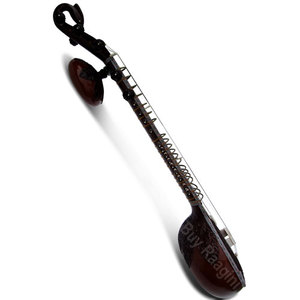 Surbahar : It is closely related to sitar, but it has a lower tone. Depending on the instrument's size, it is usually pitched
two to five whole steps below the standard sitar, but Indian classical music having no concept of absolute pitch, this may vary.
Professional full-size surbahar with a single gourd and 20 strings- Main-8 and Sympathetic-12 strings.
Surbahar sometimes known as bass sitar.
Surbahar : It is closely related to sitar, but it has a lower tone. Depending on the instrument's size, it is usually pitched
two to five whole steps below the standard sitar, but Indian classical music having no concept of absolute pitch, this may vary.
Professional full-size surbahar with a single gourd and 20 strings- Main-8 and Sympathetic-12 strings.
Surbahar sometimes known as bass sitar.
String Bowing Musical Instrument
Dilruba
.jpg) Dilruba : The dilruba is found in the
north, where it is used in religious music and light classical songs in the urban areas.
Its name is translated as "robber of the heart." It has a skin head sound box with 4 main strings and 18 sympathetic strings, 20 frets
with special bow and wooden box. There is also well known fact that The Dilruba originates from the Taus and some argue is the work of
the 10th Sikh Guru, Guru Gobind Singh, whilst that of the Taus was the work of Guru Hargobind (the sixth guru of the Sikhs)..
Dilruba : The dilruba is found in the
north, where it is used in religious music and light classical songs in the urban areas.
Its name is translated as "robber of the heart." It has a skin head sound box with 4 main strings and 18 sympathetic strings, 20 frets
with special bow and wooden box. There is also well known fact that The Dilruba originates from the Taus and some argue is the work of
the 10th Sikh Guru, Guru Gobind Singh, whilst that of the Taus was the work of Guru Hargobind (the sixth guru of the Sikhs)..
Esraj
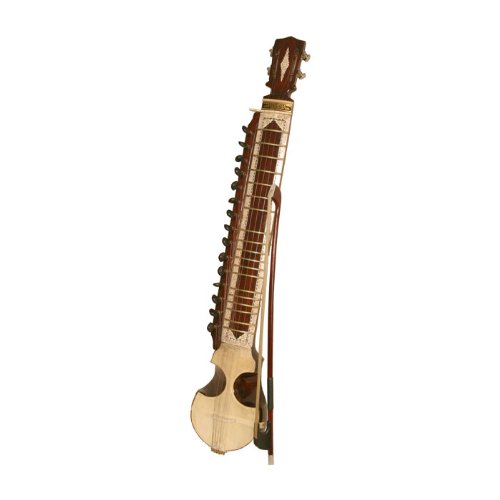 Esraj : The esraj is found in the east and central areas, particularly Bengal (Bangladesh and Indian states of West Bengal
and Tripura) and it is used in a somewhat wider variety of musical styles than is the dilruba. It’s containing 4 main strings and
15 sympathetic strings and 20 frets. The neck is similar to a sitar in which the frets are tied with thread but it is played with a bow.
Esraj : The esraj is found in the east and central areas, particularly Bengal (Bangladesh and Indian states of West Bengal
and Tripura) and it is used in a somewhat wider variety of musical styles than is the dilruba. It’s containing 4 main strings and
15 sympathetic strings and 20 frets. The neck is similar to a sitar in which the frets are tied with thread but it is played with a bow.
Sarangi
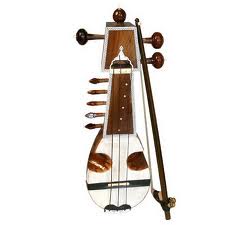 Sarangi : The sarangi is a bowed, short-necked string instrument of north India which originated from Rajasthani folk instruments.
It plays an important role in India's Hindustani classical music tradition. Of all Indian instruments, it is said to most resemble the
sound of the human voice – able to imitate vocal ornaments such as gamakas (shakes) and meend (sliding movements). Professional sarangi
made from well seasoned tun wood with 39 strings.
Sarangi : The sarangi is a bowed, short-necked string instrument of north India which originated from Rajasthani folk instruments.
It plays an important role in India's Hindustani classical music tradition. Of all Indian instruments, it is said to most resemble the
sound of the human voice – able to imitate vocal ornaments such as gamakas (shakes) and meend (sliding movements). Professional sarangi
made from well seasoned tun wood with 39 strings.
Percussion Musical Instrument
Tabla
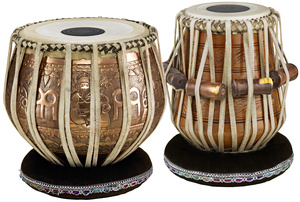 Tabla : The term 'tabla is derived from an Arabic word, tabl, which simply means "drum." It’s a very popular Indian
percussion instrument (of the membranophone family, similar to bongos), used in Hindustani classical music and in popular and
devotional music of the Indian subcontinent.
Tabla : The term 'tabla is derived from an Arabic word, tabl, which simply means "drum." It’s a very popular Indian
percussion instrument (of the membranophone family, similar to bongos), used in Hindustani classical music and in popular and
devotional music of the Indian subcontinent.
Dholak
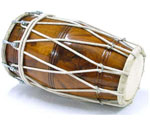 Dholak : The dholak is mainly a folk instrument, lacking the exact tuning and playing techniques of the tabla or the pakhawaj. It’s a South Asian two-headed hand-drum. It is widely used in qawwali , kirtan and Bhangra.
Dholak : The dholak is mainly a folk instrument, lacking the exact tuning and playing techniques of the tabla or the pakhawaj. It’s a South Asian two-headed hand-drum. It is widely used in qawwali , kirtan and Bhangra.
Damru
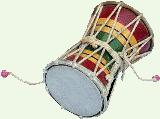 Damru : A damaru or damru is a small two-headed drum, used in Hinduism and Tibetan Buddhism. In the Hindu mythology it’s
known as a power drum, and when played, it is believed to generate spiritual energy. It is associated with the Hindu deity Shiva.
Damru : A damaru or damru is a small two-headed drum, used in Hinduism and Tibetan Buddhism. In the Hindu mythology it’s
known as a power drum, and when played, it is believed to generate spiritual energy. It is associated with the Hindu deity Shiva.
In the Tibetan Buddhist tradition, the damaru is part of a collection of sacred implements and musical instrument was adopted from
the tantric practices of ancient India. These reached the Land of Snows from the 8th to 12th century, persisting in Tibet as the
practice of Vajrayana flourished there, even as it vanished in the subcontinent of India.
Mizhavu
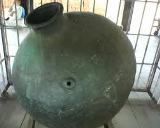 Mizhavu : A mizhav or mizhavu is a big copper drum played as an accompanying percussion instrument in the Koodiyattam and Koothu,
performing arts of Kerala . It is played by the Ambalavasi Nambiar community.
Mizhavu : A mizhav or mizhavu is a big copper drum played as an accompanying percussion instrument in the Koodiyattam and Koothu,
performing arts of Kerala . It is played by the Ambalavasi Nambiar community.
Mridangam
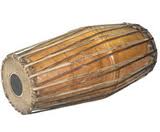 Mridangam : It is the primary rhythmic accompaniment in a Carnatic music ensemble. The mridangam is also played in Carnatic
concerts in countries outside of India, including Sri Lanka, Singapore, Malaysia, Australia, United Kingdom, Canada, and the
United States. During a percussion ensemble, the mridangam is often accompanied by the ghatam, kanjira, and the morsing.
Mridangam : It is the primary rhythmic accompaniment in a Carnatic music ensemble. The mridangam is also played in Carnatic
concerts in countries outside of India, including Sri Lanka, Singapore, Malaysia, Australia, United Kingdom, Canada, and the
United States. During a percussion ensemble, the mridangam is often accompanied by the ghatam, kanjira, and the morsing.
Ghungroo
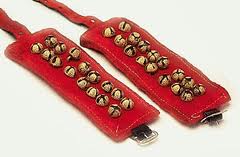 Ghungroo : A Ghungroo, also known as Ghunghroo or Ghungur (Bengali) or Salangai (Tamil) is one of many small metallic
bells strung together to form Ghungroos, a musical anklet tied to the feet of classical Indian dancers. Ghungroos or Salangais
are worn in traditional performances of the classical Indian dance forms: Bharatnatyam, Kathak, Kuchipudi, and Odissi etc.
Ghungroo : A Ghungroo, also known as Ghunghroo or Ghungur (Bengali) or Salangai (Tamil) is one of many small metallic
bells strung together to form Ghungroos, a musical anklet tied to the feet of classical Indian dancers. Ghungroos or Salangais
are worn in traditional performances of the classical Indian dance forms: Bharatnatyam, Kathak, Kuchipudi, and Odissi etc.
Ghatam
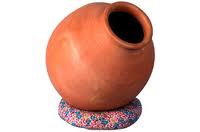 Ghatam : the ghatam (Sanskrit: ghatam "pot", Tamil: katam, Kannada: ghata, Telugu: ghatat) is a percussion instrument used
in the Carnatic music of South India. Its analogue in Rajasthan is known as the madga and pani mataqa "water jug". The ghatam usually
accompanies a mridangam.
Ghatam : the ghatam (Sanskrit: ghatam "pot", Tamil: katam, Kannada: ghata, Telugu: ghatat) is a percussion instrument used
in the Carnatic music of South India. Its analogue in Rajasthan is known as the madga and pani mataqa "water jug". The ghatam usually
accompanies a mridangam.
Khartal
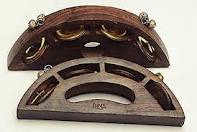 Khartal : is found three kind of in society.
Khartal : is found three kind of in society.
1. Kartals (blocks). It consists of a pair of wooden blocks with jingles or crotales (kartals mean crotales). One pair is used
in one hand of the musician. These pieces can be clapped together at high speeds to make fast complex beats.
2. Kartals (small sheets). It consists of a pair of thin, hard wooden pieces similar to the percussion bones (instrument).
These are used in Rajasthan.
3. Kartals (cymbals). The karatalas are small cymbals, also known as manjeera. These are used in devotional chants.
Manjeera
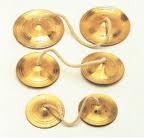 Manjeera : is a traditional musical instrument in India. It is also known as manjeera, taal, jalra, khartàl or kartàl.
It is used in various religious ceremonies of India, especially with bhajans in temples. Manjira are usually made of bronze,
brass, copper zinc or Bell metal and connected with a copper cord which passes through holes in their center.
Manjeera : is a traditional musical instrument in India. It is also known as manjeera, taal, jalra, khartàl or kartàl.
It is used in various religious ceremonies of India, especially with bhajans in temples. Manjira are usually made of bronze,
brass, copper zinc or Bell metal and connected with a copper cord which passes through holes in their center.
Jal tarang
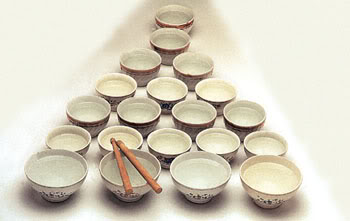 Jal tarang : It consists of a set of ceramic or metal bowls tuned with water. The bowls are played by striking the edge with beaters,
one in each hand. In other words jal tarang means "waves in water" but indicates motion of sound created or modified with the aid of water.
Jal tarang : It consists of a set of ceramic or metal bowls tuned with water. The bowls are played by striking the edge with beaters,
one in each hand. In other words jal tarang means "waves in water" but indicates motion of sound created or modified with the aid of water.
Kanch tarang or Glass Harp
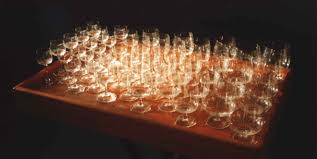 Kanch tarang or Glass Harp : It's not an Indian
classical instrument but it's like Jal - Tarang.
Kanch tarang or Glass Harp : It's not an Indian
classical instrument but it's like Jal - Tarang.
It is played by running moistened or chalked fingers around the rim of the glasses. Each glass is tuned to a different pitch, either
by grinding each goblet to the specified pitch, in which case the tuning is permanent, or by filling the glass with water until the
desired pitch is achieved.
The glass harp was created in 1741 by Irishman Richard Pockrich, who is known as the first virtuoso of the musical glasses.
Loh tarang
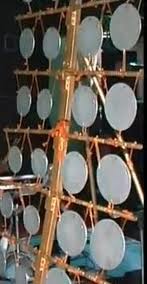 Loh tarang : It consists of a set of iron circular plates, of different sizes, held in a frame. Each plate is pitched to a
note and they are struck with sticks on each hand. 'Tarang' means waves. Plates sound depends on the different size of plate and
hand movement. Theory is based like Jal-Tarang.
Loh tarang : It consists of a set of iron circular plates, of different sizes, held in a frame. Each plate is pitched to a
note and they are struck with sticks on each hand. 'Tarang' means waves. Plates sound depends on the different size of plate and
hand movement. Theory is based like Jal-Tarang.
Wind Musical Instrument
Shruti Box
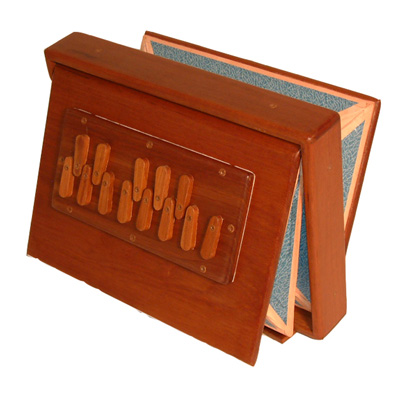 Shruti Box : A shruti box (or sruti box) is a small wooden instrument that traditionally works on a system of bellows. It is
similar to a harmonium and is used to provide a dronein a practice session or concert of Indian classical music.
Shruti Box : A shruti box (or sruti box) is a small wooden instrument that traditionally works on a system of bellows. It is
similar to a harmonium and is used to provide a dronein a practice session or concert of Indian classical music.
Shennai or Mangal Vadya
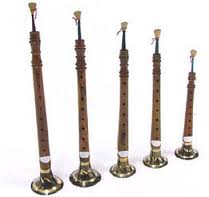 Shennai or Mangal Vadya : is an aerophonic (wind) instrument, a double reed conical oboe, common in North India, West
India andPakistan, made out of wood, with a metal flare bell at the end. The South Indian equivalent of the shehnai is the nadaswaram.
Shennai or Mangal Vadya : is an aerophonic (wind) instrument, a double reed conical oboe, common in North India, West
India andPakistan, made out of wood, with a metal flare bell at the end. The South Indian equivalent of the shehnai is the nadaswaram.
Flute or Bansuri
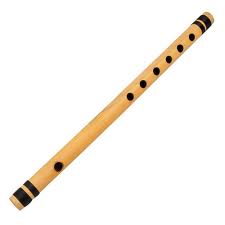 Flute or Bansuri : The bansuri is a transverse flute of India made from a single hollow shaft of bamboo with six or seven finger holes.
The Bansuri is revered as Lord Krishna's divine instrument, and is often associated with Krishna's Rasa lila; mythological accounts tell of the
tunes of Krishna's flute having a spellbinding and enthralling effect not only on the women of the Braj, but even on the animals and birds of the region.
Flute or Bansuri : The bansuri is a transverse flute of India made from a single hollow shaft of bamboo with six or seven finger holes.
The Bansuri is revered as Lord Krishna's divine instrument, and is often associated with Krishna's Rasa lila; mythological accounts tell of the
tunes of Krishna's flute having a spellbinding and enthralling effect not only on the women of the Braj, but even on the animals and birds of the region.
Keyboard Musical instrument
Harmonium
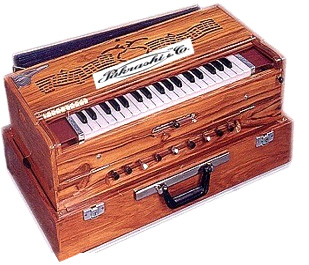 Harmonium or Hand pumped : It's a free-standing keyboard instrument similar to a reed organ. Sound is produced by air being blown
through sets of free reeds, resulting in a sound similar to that of an accordion. The air is usually supplied by bellows operated by the
foot, hand, or knees.
Harmonium or Hand pumped : It's a free-standing keyboard instrument similar to a reed organ. Sound is produced by air being blown
through sets of free reeds, resulting in a sound similar to that of an accordion. The air is usually supplied by bellows operated by the
foot, hand, or knees.
In North America, the most common pedal-pumped free-reed keyboard instrument is known as the "American reed organ", (or "parlor organ",
"pump organ", "cabinet organ", "cottage organ", etc.) and along with the earlier melodeon, is operated by a suction bellows where air is
sucked through the reeds to produce the sound. A reed organ with a pressure bellows that pushes the air through the reeds is referred to
as a "harmonium". In India, generally refers to a hand-pumped instrument.
Synthesizer
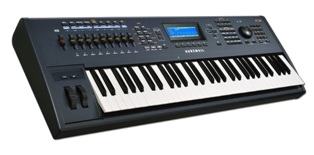 Synthesizer or Keyboard : A sound synthesizer (often abbreviated as "synthesizer" or "synth") is an electronic instrument capable
of producing a wide range of sounds. Synthesizers use a number of different technologies or programmed algorithms to generate signal,
each with their own strengths and weaknesses. Among the most popular waveform synthesis techniques are subtractive synthesis, additive
synthesis, wavetable synthesis, frequency modulation synthesis, phase distortion synthesis, physical modeling synthesis and sample-based
synthesis.
Synthesizer or Keyboard : A sound synthesizer (often abbreviated as "synthesizer" or "synth") is an electronic instrument capable
of producing a wide range of sounds. Synthesizers use a number of different technologies or programmed algorithms to generate signal,
each with their own strengths and weaknesses. Among the most popular waveform synthesis techniques are subtractive synthesis, additive
synthesis, wavetable synthesis, frequency modulation synthesis, phase distortion synthesis, physical modeling synthesis and sample-based
synthesis.
